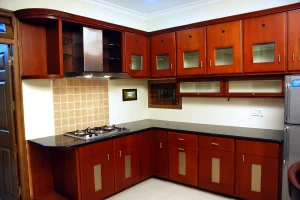Creating a Sustainable and Eco-Friendly Home

Eco-Friendly living may seem impossible to accomplish, but thanks to modern options it doesn’t need to be. From air sealing and green cleaning products, there are multiple ways homeowners can create an eco-friendly home that supports health.
Installing energy-efficient lighting with timers and dimmers will significantly lower your electricity costs, while eco-friendly insulation helps cut energy consumption.
Energy Efficiency
Energy efficiency upgrades are key components of sustainable living homes, both economically and ecologically. Energy-saving upgrades help save on energy costs while simultaneously cutting carbon emissions; additionally, they may help people live longer by decreasing respiratory ailments like asthma or emphysema.
Utilizing eco-friendly building materials is one simple way to make your home more sustainable from its inception. Such materials include recycled or reclaimed wood, bamboo, straw bale and stone; insulation with minimal environmental impacts should also be utilized; additionally using Energy Star-certified fridges and washing machines can reduce energy costs significantly and help create an eco-friendly home.
Water conservation is also key to living sustainably, with methods including using water-efficient faucets and showerheads, rainwater collection systems and gardening used as ways of conserving this precious resource. This can especially come in handy during drought conditions where supplies are limited. Finally, growing herbs and vegetables yourself in containers or gardens reduces store purchases while cutting emissions emissions from transportation emissions.
Water Efficiency
One of the main advantages of eco-friendly living is reduced water usage. From using drought-resistant landscaping to upgrading toilets with water-saving models, making a few lifestyle adjustments can save thousands of gallons annually.
Many green solutions can also be more cost-effective than their non-eco counterparts, including recycled insulation and finishing materials like reclaimed wood or linoleum which can be purchased for significantly less than non-eco alternatives.
Renewable energy solutions in your home can significantly lower your electric bills while saving you a substantial amount. Solar panels, wind power and radiant heated flooring are among the many renewable energy systems you could add; also consider an MVHR (Mechanical Ventilation with Heat Recovery) system to improve air quality while cutting energy costs.
Indoor Air Quality
Ouch! Though it might seem counterproductive, a sustainable home should be free from indoor air pollution. This includes using renewable energy sources to lower carbon dioxide levels while simultaneously minimising waste from water and energy use, creating healthy living spaces, and making sure their residents have plenty of fresh air to breathe.
An unhealthy indoor air quality is caused by various sources, including combustion from furnaces and fireplaces, building materials such as drywall and pressed wood products; paint, cleaning products and cosmetics used in household cleaners; central heating and cooling systems; as well as paint odor. All these pollutants may pose health concerns such as respiratory illnesses and cancer.
Sustainable homes should feature energy-efficient lighting with timers and dimmers to turn lights off when not needed, energy efficient appliances with reduced energy use, designed to allow natural airflow throughout the house, water efficient landscaping that fits its climate, as well as minimal maintenance requirements for its plants.
Materials
Sustainable building materials can make an enormous impact in terms of energy costs, carbon emissions and family wellbeing. Utilizing recycled products such as recycled wood products or terra cotta reduces production and transport energy usage significantly.
Repurposed materials such as sheep’s wool are renowned for their warm insulation properties in blankets and sweaters, yet can be used to create eco-friendly ceilings or walls. Reusing straw reduces carbon emissions into the atmosphere while providing an eco-friendly way of using this abundant waste byproduct.
Consider sourcing materials locally to reduce transportation needs, such as using local stone instead of shipping it in from across the country, precast concrete is more sustainable than on site concrete poured by hand, durable, high quality materials are better for longevity, meaning your home needs less maintenance over time, which is great for sustainability.






